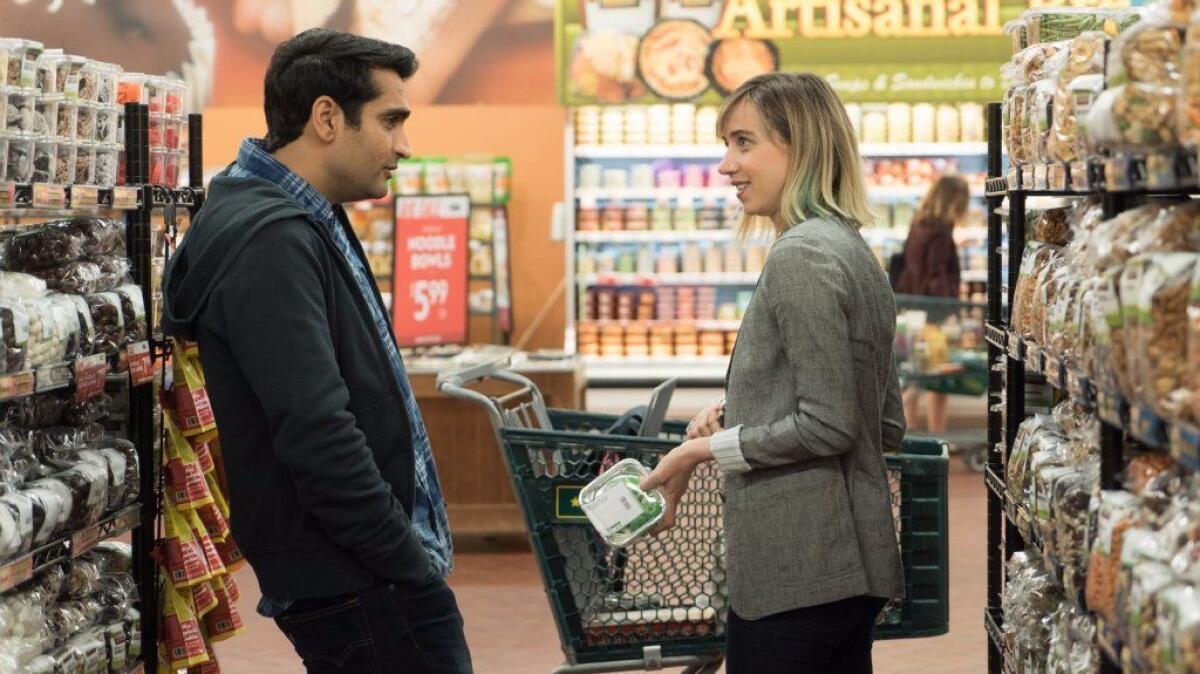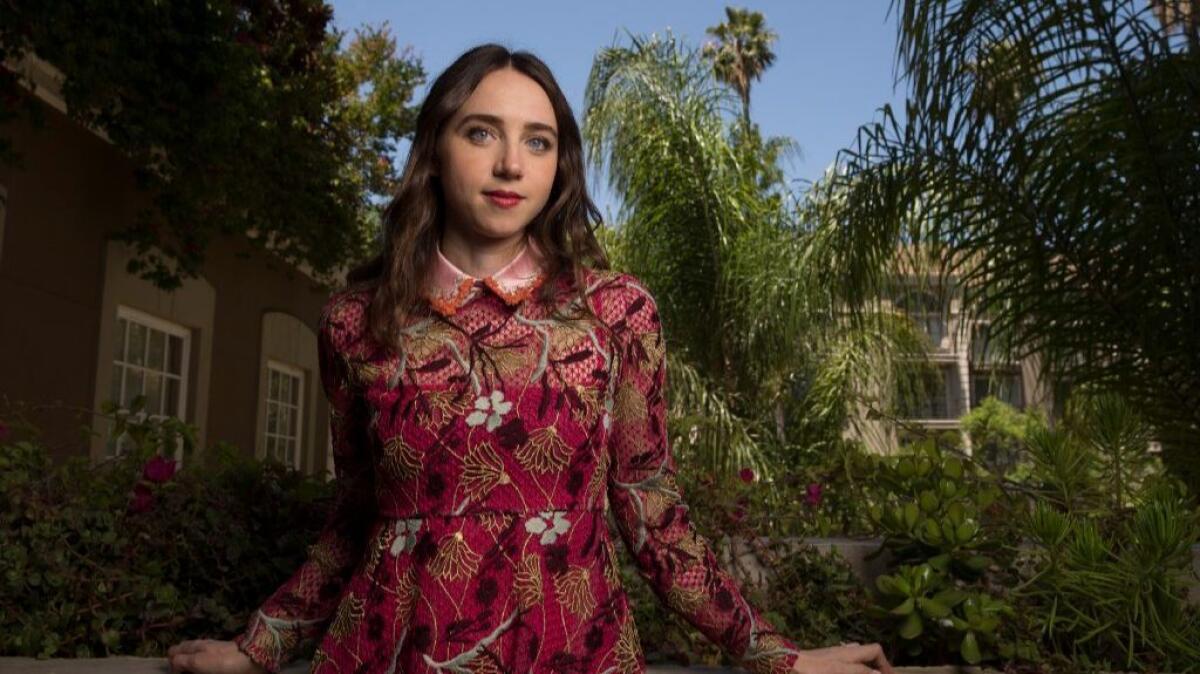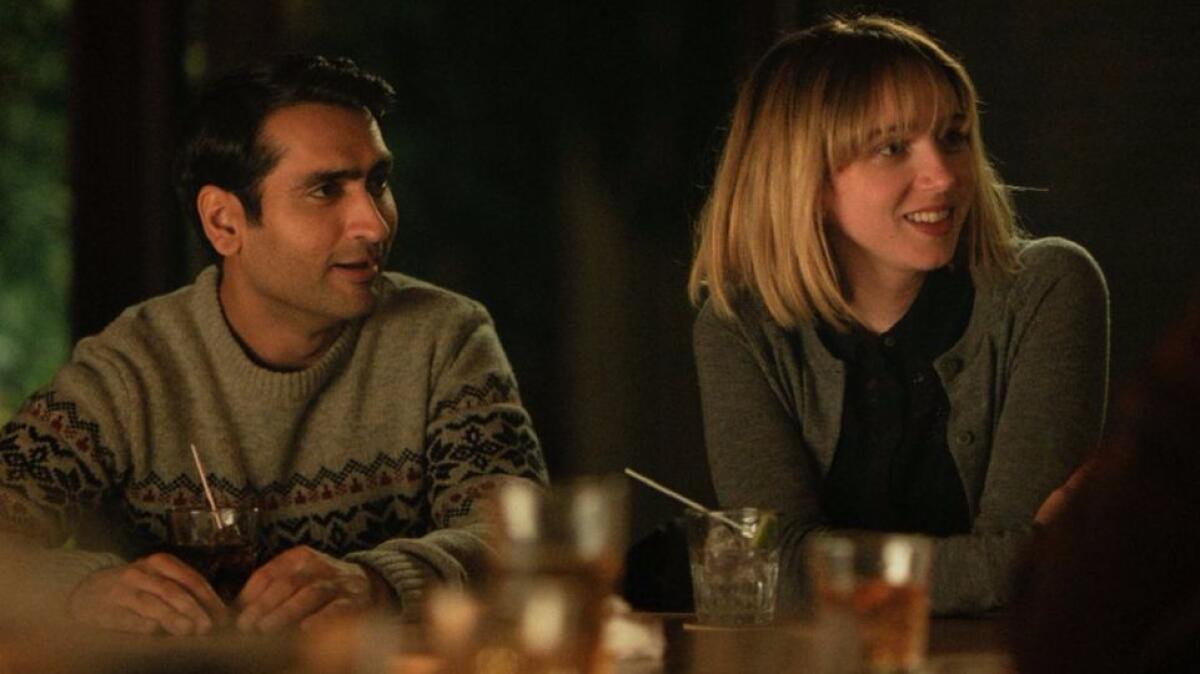‘The Big Sick’: How do you tell your personal story and make it feel like everyone’s story?

- Share via
I was a therapist before I started writing professionally. When you sit down with a client, that person will have a different worldview than you, completely different values and a unique set of struggles. It’s the therapist’s job to connect with the client, to help him or her feel seen. When my husband, Kumail Nanjiani, and I set out to form our own courtship into a screenplay that became “The Big Sick,” our challenges reminded me of my therapy days: How do we take a very specific and unusual set of experiences and tell a story that other people can connect with? How do we tell our story in a way that feels like it could be your story too?
Our process started with the two of us writing long, intense drafts that were essentially a play-by-play of what actually happened. We sometimes cried as we wrote. We sometimes disagreed about what our experiences meant. We folded those disagreements into the screenplay, as neither one of us would concede our points and we are both stubborn. We worked with producers

We had endless discussions about what this movie was really going to be about, trading stories about disappointing our parents, figuring out who we are in relation to our families and having loved ones in the hospital. We talked about how being in a romantic relationship also means being in a relationship with all of the baggage your partner has collected throughout a lifetime. We talked about how none of us really have the answers to complicated questions, but how sometimes it’s enough just to ask the questions. We talked about how none of us are ever really done growing or changing. We laughed a lot. Sometimes we got emotional.
Often as we were writing, we would realize that just because a moment had resonance to our lives personally, that didn’t mean that seeing a re-creation of that moment would communicate that resonance to the audience. We had to dig down into what those moments meant to us and what emotions they evoked, and then craft scenes that would accomplish the same thing, just more cinematically. We struggled with how to show that our characters were concerned about Emily’s health without having them state the obvious. When you’re in an actual hospital situation, you’re not constantly talking about it — if anything, you’re desperately trying to not talk about it, and yet your fears can’t help but show themselves. We created scenes of misdirected frustration for our characters.
Video Q&A’s from this season’s hottest contenders »

Director Michael Showalter was brought on, and with him, we worked on the emotional tone of the movie. We worked hard to make scenes funny without disrespecting the gravity of the situation. When in doubt, we always harked back to the idea that comedy comes from a person in a situation that he/she is ill-equipped to deal with. We opened ourselves up to the viewpoints of every character in the movie, and therefore our lives. Writing scenes of what Kumail and my parents were doing day by day in the hospital while I was in a coma, I got my first real appreciation for how mind-numbingly anxious and scary those days must have been — I’d been so wrapped up in my own illness that I had never thought to ask about that time. Writing dialogue for Kumail’s parents, having to put ourselves in their shoes, we gained a new appreciation for what they experienced.
We also honed the characters of Kumail and Emily, made them versions of ourselves that were also specifically separate from us. Writing scenes that addressed Kumail’s experience as a Pakistani immigrant in America, I got a new angle on what that experience has been like for him. I remember having a spirited and surreal debate with the group about whether “Emily” would react to a situation a certain way and laughing because I was no longer the only expert on “Emily.”

We were extremely lucky when it came to casting “The Big Sick.” We were able to assemble a group of inquisitive, talented, hardworking actors who all saw the movie as we saw it. Like a relationship, each actor brought their own thoughts and inspiration and baggage to their roles. As we worked with them, each character sharpened and the resonance of each scene intensified. Our storytelling circle, once just the two of us, was now the size of a basketball team. It would continue to grow as we filmed and then edited the movie.
See the most read stories this hour »
Our movie premiered at Sundance this year, and as we walked to a restaurant after our first screening, several strangers approached me to tell me about their own health scares, their own relationships that faced challenges. I listened, grateful to not be talking about “the biz,” moved by their candor. Women often tell me their hilarious stories of trying to creatively “handle” bathroom situations in new relationships, and I relish every single one. When I was a therapist, I would often connect with my clients through the great equalizer of emotion. I can’t ever know my client’s life experiences, but I can relate to feeling anger or relief or hopelessness. My favorite movies are the ones that evoke strong emotions in me and send me spinning off on my own journeys, re-examining my life for things I’d missed, relishing experiences I’ve had, or just nodding “me too.” Movies are a great way of showing us that even if we haven’t lived each other’s lives, we can still see each other, and be seen.
It’s nice to know that my old job and my new job have some things in common.

ALSO
Kumail Nanjiani mines real-life cultural hurdles and avoiding an arranged marriage in 'The Big Sick'
From the Oscars to the Emmys.
Get the Envelope newsletter for exclusive awards season coverage, behind-the-scenes stories from the Envelope podcast and columnist Glenn Whipp’s must-read analysis.
You may occasionally receive promotional content from the Los Angeles Times.





